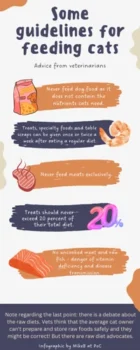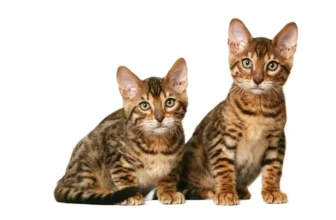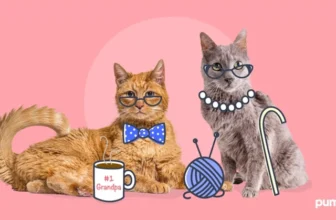Caring for your California Spangled cat’s nutritional needs can be a perplexing task, especially with the overwhelming number of cat food options available on the market. You want to be sure that the food you choose will provide your furry friend with the right balance of nutrients to support their overall health and wellbeing. But with a plethora of cat food labels to sift through, how can you be certain that you’re making the right choice? In this article, we’ll take a closer look at how to read and understand cat food labels, what to look for, and how to decode common ingredients to ensure that your California Spangled cat is receiving the best possible nutrition.
What to Look for on a Cat Food Label
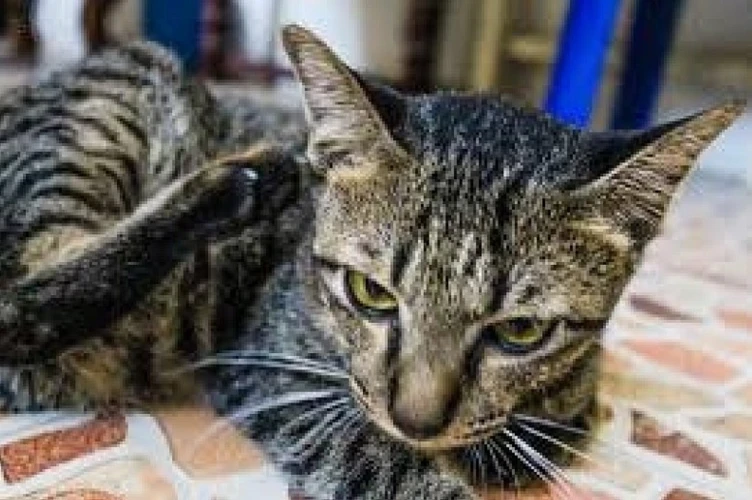
Reading cat food labels can be a daunting task, but it is crucial to ensure that your California Spangled cat is getting the right nutrition for their needs. The cat food label provides important information about the ingredients, nutrient content, and claims made by the manufacturer. Understanding what to look for on a cat food label is essential to make an informed decision about what goes into your furry friend’s body. In the next sections, we will go through each component of the cat food label and explain what to pay attention to when choosing cat food for your California Spangled.
Brand Name and Product Name
When looking at the label of cat food, the brand name and the product name give us a hint about the manufacturer and the specific type of food. It’s important to pay attention to both the brand and the product name as they can provide valuable information about what’s inside the package.
Brand Name
The brand name of the cat food on the label tells us who manufactured it. It’s crucial to buy cat food from a reputable and trustworthy company that has a good reputation for producing quality products. Some well-known brands that produce cat food are Royal Canin, Purina, Hill’s Science Diet, and Blue Buffalo. However, if you’re not sure which brand is best for your California Spangled, speak with your veterinarian to get some recommendations.
Product Name
The product name on the cat food label gives us a description of the type of food inside the package. For example, it might be wet or dry food, or specific to a certain life stage or a health condition. Some product names that may appear on cat food labels are “Kitten Formula”, “Senior Cat Mix”, or “Healthy Weight Formula”. These product names give information on what type of cat each product is intended for.
It’s important to note that the product name on the label should not be confused with the brand name. Some brands may have the same product names, but the ingredients and quality of the products may differ. It’s always important to read the label thoroughly to understand exactly what you’re feeding your California Spangled.
To select the best food for your cat, consider factors like age, health condition, activity level, and breed-specific requirements. You can check out our articles on balanced diet for California Spangled, Cal Spangled nutrition, and California Spangled cats deficiencies. If you want to make your own cat food, both pros and cons are here in our full article on homemade cat food pros and cons. We also have an article about vitamins and supplements, and comparing raw food diet and commercial food in raw food diet vs commercial cat food.
Guaranteed Analysis
The guaranteed analysis on a cat food label provides important information about the nutritional value of the product. This section lists the minimum percentages of crude protein and fat, as well as the maximum percentages of crude fiber and moisture. It may also include information on the levels of essential vitamins and minerals. Here are some things to consider when looking at the guaranteed analysis:
- Protein: Cats are obligate carnivores, which means they require a high amount of quality protein in their diet to thrive. Look for a cat food that lists a named meat or fish as the first ingredient and has a protein percentage of at least 30%.
- Fat: Fat is an important source of energy for cats and also helps with the absorption of certain vitamins. Look for a cat food that has a fat percentage of at least 15%.
- Fiber: While fiber is important for digestive health, too much of it can lead to diarrhea or constipation. Look for a cat food that has a fiber percentage of no more than 5%.
- Moisture: Cats are not big drinkers and can easily become dehydrated. Look for a cat food that has a moisture percentage of no more than 10%.
It’s important to keep in mind that the guaranteed analysis only provides a snapshot of the nutritional content of the cat food. It doesn’t take into account the quality or digestibility of the ingredients, which can greatly affect a cat’s overall health and wellbeing. That’s why it’s important to also consider the ingredients list and any additional information provided by the cat food manufacturer when selecting a food for your California Spangled.
Ingredients List
When it comes to choosing the right cat food for your California Spangled, the ingredients list is one of the most important things to pay attention to. The ingredients listed on the label will tell you everything you need to know about what is actually in the food, as well as the quality of those ingredients. Here are some key things to look for when reading the ingredients list:
| Ingredient | What to Look for |
|---|---|
| Named Meat and Meat Meals | Look for ingredients like “chicken meal” or “salmon” rather than generic terms like “meat” or “meat by-products.” |
| Whole Grains | Whole grains like brown rice and oatmeal are a good source of nutrients and fiber for cats. Avoid foods that list “corn” as the main ingredient. |
| Fruits and Vegetables | Look for ingredients like sweet potatoes and carrots which are a good source of vitamins and minerals. |
| Artificial Preservatives, Colors or Flavors | Avoid foods that contain artificial preservatives, colors, or flavors like BHA, BHT, and ethoxyquin, which can be harmful to your cat’s health. |
| Taurine | This amino acid is essential for cats and should be listed as an ingredient. |
| By-Products | Avoid foods that list “by-products” as the main ingredient, as these can often be low-quality cuts of meat, such as beaks, feet, and feathers. |
It is important to note that the ingredients list is listed in descending order by weight, meaning the first few ingredients are the most important. Look for a food that has named sources of protein as the first few ingredients, as this shows a high-quality protein source. Additionally, be wary of foods that have a long list of ingredients with hard-to-pronounce names. This could be an indication of a highly processed and less nutritious food.
Taking the time to read and understand the ingredients list on your cat’s food can help ensure that they are getting the nutrition they need to thrive. Remember to look for named sources of protein, whole grains, and fruits and vegetables while keeping an eye out for artificial preservatives, colors, and flavors.
Feeding Guidelines
Once you have identified the brand name, product name, guaranteed analysis, and ingredients list on a cat food label, the feeding guidelines are the next piece of crucial information to look for. These guidelines will typically indicate the recommended feeding amount based on your cat’s weight, age, and activity level. It is important to follow these instructions carefully to ensure your California Spangled is receiving the appropriate amount of nutrients for their needs.
Here are some key points to keep in mind when reviewing feeding guidelines:
- Pay attention to the recommended daily serving size: This will help prevent over- or under-feeding your cat. If you are unsure of how much to feed, consult with your veterinarian.
- Adjust serving size based on your cat’s needs: If your cat is particularly active, they may require more food than a sedentary cat of the same weight. Alternatively, if your cat is overweight, they may need to have their feeding amount reduced.
- Consider feeding frequency: Many cat food brands recommend splitting the daily serving into two or more meals. This can help prevent overeating and promote healthy digestion.
- Be mindful of treats: Treats should not make up more than 10% of your cat’s daily calorie intake. If you are using treats for training or as a supplement to your cat’s diet, be sure to adjust their regular serving size accordingly.
Ultimately, following feeding guidelines is key to maintaining your California Spangled’s overall health and wellbeing. By feeding them the appropriate amount of high-quality food, you can help keep them happy and active for years to come.
Decoding Cat Food Ingredients for a California Spangled
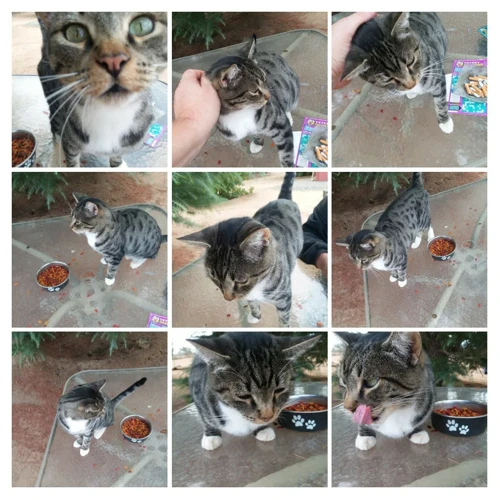
As pet owners, we want to ensure that our feline friends are getting the best nutrition possible. However, understanding the ingredients listed on cat food labels can be a daunting task. What exactly does “chicken by-product meal” or “brewers rice” mean? This section will help you decode the ingredients list on cat food labels and provide you with the information you need to make informed decisions about what to feed your beloved California Spangled. Let’s dive in and uncover the mysteries of cat food ingredients!
Protein and Essential Amino Acids
When selecting cat food for a California Spangled, it’s important to pay attention to the protein and essential amino acids included in the food. Protein is an essential component in your cat’s diet as it helps to build and repair tissue – this can range from their muscles to their fur and skin. Amino acids, meanwhile, are the building blocks of protein.
But not all proteins are created equal! For your California Spangled, look for proteins that come from animal sources, such as chicken, beef, or fish. These proteins contain all of the essential amino acids that your cat needs to stay healthy. Some plant-based proteins, such as soy, may also be used in cat food, but they are not as effective as animal-sourced proteins.
In addition to the source of the protein, it’s also important to consider the protein content of the food. As a general rule, look for cat foods that have a high percentage of protein – aim for at least 25% or more. This can help to ensure that your California Spangled is getting the necessary amount of protein to support their health.
When examining the ingredient list, look for specific types of proteins, such as “chicken meal” or “salmon”. These specific proteins often contain higher amounts of essential amino acids than more general terms, such as “poultry” or “fish”.
Key takeaway: Look for cat food with high-quality, animal-sourced proteins that contain all essential amino acids. Check the ingredient list for specific types of proteins, such as “chicken meal” or “salmon”.
Fats and Essential Fatty Acids
Fats are a crucial component of a California Spangled’s diet, helping to provide energy, support various bodily functions, and improve the taste and texture of their food. Essential fatty acids, such as omega-3 and omega-6, cannot be synthesized by cats and must be obtained through their diet. When reading cat food labels, it’s important to look for high-quality sources of fats and essential fatty acids.
Table: Examples of High-Quality Fat and Essential Fatty Acid Sources in Cat Food
| Ingredient | Benefits |
| ———- | ——– |
| Chicken fat | Provides energy and improves flavor |
| Salmon oil | Rich in omega-3 fatty acids to support heart and brain health |
| Flaxseed | Rich in alpha-linolenic acid, an omega-3 fatty acid |
| Sunflower oil | Provides energy and is a source of linoleic acid, an omega-6 fatty acid |
Cats require a balance of both omega-3 and omega-6 fatty acids in their diet, with a recommended ratio of 1:5 (omega-3 to omega-6). While many commercial cat foods contain sufficient levels of omega-6 fatty acids, deficiencies in omega-3 are more common. Look for cat foods that contain sources of omega-3, such as fish oil or flaxseed.
It’s also important to consider the overall fat content in your cat’s food. While some fats are necessary in a California Spangled’s diet, excess fat can contribute to obesity and other health problems. In general, the fat content of cat food should be around 10-15% of the total calories.
When evaluating the fat and essential fatty acid content of cat food, also consider the source and quality of the ingredients. Animal-based fats, such as chicken fat or fish oil, are generally considered higher quality and more biologically appropriate for cats than plant-based fats. Keep in mind that some cats may also have sensitivities to certain sources of fat or fat levels, so be sure to monitor your cat’s response to their food and make adjustments as necessary.
Carbohydrates
Carbohydrates are a major component of cat food, providing energy and aiding in digestion. However, not all carbohydrates are created equal. When it comes to choosing cat food for your California Spangled, it’s important to pay attention to the source of carbohydrates to ensure they are of high quality.
Good sources of carbohydrates include whole grains like brown rice and quinoa, as well as vegetables like sweet potatoes and carrots. These carbohydrates provide essential vitamins and minerals as well as fiber to aid in digestion.
Bad sources of carbohydrates include cheap fillers like corn, wheat, and soy. These types of carbohydrates offer little nutritional value and can even lead to allergic reactions or digestive issues in some cats.
When reading cat food labels, look for specific sources of carbohydrates listed in the ingredients. Avoid labels that simply list “grain” without specifying the type, as this could indicate low-quality fillers.
It’s also important to keep in mind that cats are obligate carnivores, meaning their natural diet consists mostly of animal protein. While carbohydrates can provide some benefits, they should not make up a large portion of your cat’s diet.
When choosing a cat food for your California Spangled, pay attention to the source of carbohydrates to ensure they are of high quality and provide essential nutrients without relying on cheap fillers.
Vitamins and Minerals
Vitamins and minerals are essential nutrients required by your California Spangled to maintain a healthy body. Cat food manufacturers usually include a list of added vitamins and minerals on the label to ensure your cat gets the necessary nutrients they cannot get from the main ingredients. Here are some key vitamins and minerals your cat needs to stay fit and healthy:
| Vitamin/Mineral | What it does | Sources |
|---|---|---|
| Vitamin A | Keeps skin healthy, aids vision, and boosts the immune system | Liver, fish oil, eggs |
| Vitamin D | Helps regulate calcium and phosphorus levels in the body | Fish and liver oils, sunlight exposure |
| Vitamin E | Provides antioxidants and support to the immune system | Vegetable oils, nuts, seeds, and leafy greens |
| Vitamin K | Stimulates blood clotting and regulates calcium in the bloodstream | Green, leafy vegetables, liver, egg yolks |
| Vitamin B12 | Helps with the formation of red blood cells and brain function | Meat, fish, liver, eggs, and dairy products |
| Calcium | Builds strong bones and teeth, stimulates blood clotting, and helps muscles function | Milk, cheese, yogurt, fish, and leafy greens |
| Phosphorus | Supports bone and teeth formation, cell growth, and metabolism | Meat, fish, poultry, and dairy products |
| Magnesium | Helps with bone formation, protein synthesis, and nerve function | Meat, fish, poultry, dairy products, and vegetables |
| Sodium | Necessary for nerve function and balances water levels in the body | Salt and other additives in the cat food |
As you can see, different vitamins and minerals perform different functions in your cat’s body, and it is important to make sure their food contains the right amount of each nutrient. Too much or too little of any vitamin or mineral can cause health problems for your cat, so be sure to speak with your veterinarian about your cat’s specific nutritional needs.
Common Cat Food Label Claims and What They Really Mean
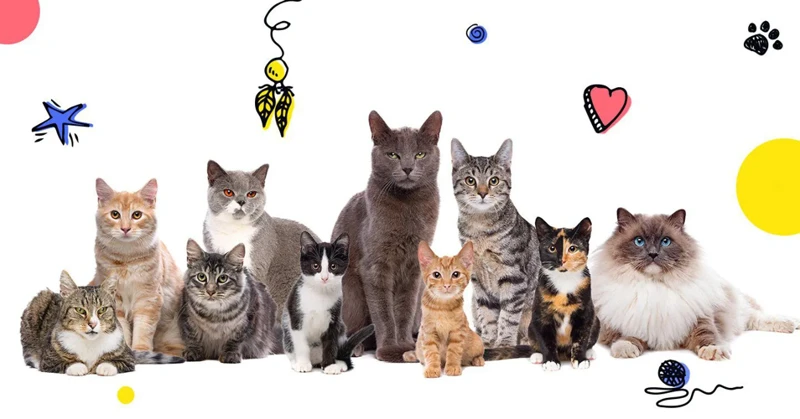
When you browse through cat food labels, you may come across terms such as “natural,” “grain-free,” and “organic.” It can be perplexing to understand what these claims actually mean and whether they are beneficial for your California Spangled cat’s nutritional needs. In this section, we’ll decode these common cat food label claims and explain what they really mean, helping you make informed decisions about the cat food you choose. So, let’s dive in and uncover the truth behind these claims.
Natural
When shopping for California Spangled cat food, you may come across the term “natural” on cat food labels. While this term may seem straightforward, it can be confusing to understand its meaning and whether it’s important for your pet. Let’s take a closer look at what “natural” means on a cat food label.
The Definition of “Natural” Cat Food:
According to the Association of American Feed Control Officials (AAFCO), natural cat food must consist of only minimally processed ingredients. The definition goes on to state that the ingredients must not contain any synthetic or artificial substances, except for vitamins and minerals that are added to meet nutritional requirements.
What to Look for on the Label:
If you’re looking for a natural cat food for your California Spangled, here are some things to keep in mind when reading the label:
| Label Claim | What It Means |
|---|---|
| Natural | All ingredients are minimally processed and free of synthetic or artificial substances, except for added vitamins and minerals. |
| Organic | The ingredients are free of synthetic fertilizers, chemicals, and pesticides. |
| Grain-Free | The cat food does not contain any grains, which can be beneficial for cats with grain sensitivities. |
Is “Natural” Better for Your Cat?
While the term “natural” may make cat owners feel good about what they’re feeding their pets, it’s important to remember that it does not necessarily mean the food is healthier or better for your cat. For example, a natural cat food may still contain low-quality ingredients or lack essential nutrients that your California Spangled needs.
Ultimately, it’s up to cat owners to carefully read and understand cat food labels to provide their pets with a high-quality, nutritionally balanced diet. While selecting a natural cat food can be a good starting point, it’s important to consider factors like your cat’s age, health needs, and food sensitivities when selecting a cat food.
Grain-Free
If you have been shopping for cat food, you might have come across the term “grain-free” several times. This label means that the food does not contain any grains such as wheat, corn, soy, rice, or barley. Instead, the food may contain other sources of carbohydrates such as peas, lentils, chickpeas, potato, or sweet potato.
Benefits of Grain-Free Cat Food
One of the reasons why pet owners choose grain-free cat food is that some cats may have food allergies or sensitivities to certain grains. Grain-free food can be an ideal option for these cats as it removes potential allergens from their diet.
Grain-free cat food may also be suitable for cats that are overweight or have diabetes. This is because a low-carbohydrate diet can help manage blood sugar and insulin levels, promoting weight loss and preventing obesity-related health conditions.
Possible Concerns with Grain-Free Cat Food
Despite the benefits, there are some concerns with grain-free cat food. Some studies have linked a grain-free diet to an increased risk of a heart condition called dilated cardiomyopathy (DCM) in cats. DCM is a condition that affects the heart and can reduce its ability to pump blood effectively.
The exact cause of this association is not known, but it is thought that grain-free diets may be deficient in certain amino acids that are essential for heart health. It is recommended that if you are considering a grain-free diet for your cat, you consult with your veterinarian first and choose a food that has been formulated with balanced nutrition in mind.
In Summary
While grain-free cat food may be a good option for cats with food sensitivities or those that need to manage their weight, it is essential to choose a food that is balanced and meets all of your cat’s nutritional needs. It is always best to consult with a veterinarian before making any changes to your cat’s diet.
Organic
When you see the term “organic” on a cat food label, you may assume that it contains only the healthiest and most natural ingredients. However, it’s important to understand that organic doesn’t always mean what we think it does.
What does “organic” mean?
The term “organic” generally means that the ingredients used in a product were grown or raised without synthetic pesticides, fertilizers or antibiotics.
Benefits of Organic Cat Food
Organic cat food can be a great choice if you’re looking for a high-quality food with no artificial ingredients. Organic ingredients are often richer in nutrients and can be easier for your cat’s body to digest.
| Benefits | Drawbacks |
|---|---|
| May contain higher quality ingredients | Tends to be more expensive |
| May be easier for your cat’s body to digest | May still contain artificial preservatives and fillers |
| May be healthier for cats with certain health conditions | May not always be 100% organic, despite the label claim |
Drawbacks of Organic Cat Food
One of the main drawbacks of organic cat food is that it can be more expensive than non-organic options. Additionally, while the label may say “organic,” there is still a chance that the food contains artificial preservatives or fillers.
It’s important to carefully read the ingredients label and do your research before selecting an organic cat food. Look for products that have been certified by an organization like the USDA to ensure that they meet strict organic standards.
While organic cat food can be a great option for some cats, it’s important to remember that the label alone isn’t enough to guarantee that a product is healthy or natural.
Holistic
When considering cat food for your California Spangled, you may come across the term “holistic.” This term sounds enticing and suggests a natural approach to cat food, but what does it actually mean?
Holistic cat food is marketed as being made with whole ingredients and being free of artificial colors, flavors, and preservatives. It also emphasizes the importance of a balanced diet with high-quality protein sources, natural fibers, and essential vitamins and minerals. Additionally, holistic cat food brands often claim to support overall wellness, not just your cat’s nutrition.
However, it’s important to note that the term “holistic” is not regulated by the FDA or any other organization. This means that any cat food brand can use this term on their packaging without any real requirements for what the food actually contains.
If you’re interested in trying a holistic cat food for your California Spangled, it’s important to read the label carefully and look for the following:
Whole Ingredients: Holistic cat food should contain ingredients that are minimally processed and as close to their natural state as possible. Look for high-quality protein sources like whole meats, organ meats, and fish. Whole fruits and vegetables, as well as natural sources of fiber like brown rice or sweet potatoes, should also be included.
Absence of Artificial Additives: To truly be considered holistic, a cat food should not contain any artificial colors, flavors, or preservatives. Look for brands that use natural preservatives like tocopherols (a type of Vitamin E) or rosemary extract.
Focus on Overall Wellness: In addition to meeting your cat’s nutritional needs, holistic cat food should also support overall wellness. Look for added vitamins and minerals like probiotics and omega-3 fatty acids to support digestion, immune function, and a healthy coat.
While “holistic” cat food may have its benefits, it’s important to approach this term with caution and skepticism. Always read the label carefully and look for recognizable whole ingredients and a balanced nutrient profile to ensure that you’re providing the best nutrition possible for your California Spangled.
Human-Grade
One term that you may have seen on cat food labels is “human-grade.” This term suggests that the ingredients used in the food are of high quality and similar to those used in human food. However, it’s important to know that there is no official definition or regulation for this term in the pet food industry.
According to the Pet Food Institute, there is no legal definition of “human-grade” for pet food. Instead, the term is often used in marketing to suggest that the ingredients used in the food are of high quality and safe for humans to consume. While this may be true in some cases, it’s important to remember that pet food and human food are not interchangeable.
If you are looking for a high-quality cat food for your California Spangled, it’s important to look beyond the “human-grade” label and examine the actual ingredients used in the food. Look for foods that contain high-quality sources of protein, such as real meat or fish, as well as healthy fats, carbohydrates, and essential vitamins and minerals.
To help you evaluate cat foods that claim to be “human-grade,” here is a table outlining the key factors to consider:
| Factor | What to look for | What to be cautious of |
|---|---|---|
| Quality of ingredients | Look for whole proteins (e.g. chicken, turkey, fish) and whole grains (e.g. brown rice, quinoa). | Be cautious of vague ingredient terms like “meat meal” or “by-products.” |
| Source of ingredients | Look for foods with transparent sourcing and quality control measures. | Be cautious of foods made with ingredients from unknown sources or with a history of recalls or contamination. |
| Nutritional balance | Look for foods that meet your cat’s nutritional needs based on their age, activity level, and health status. | Be cautious of foods that claim to be complete and balanced without providing adequate levels of essential nutrients. |
| Certifications | Look for foods that have certifications from reputable organizations like the AAFCO (Association of American Feed Control Officials). | Be cautious of foods that claim to be “human-grade” without any proof of certification or third-party testing. |
Remember, while the “human-grade” label may be a good starting point for evaluating cat foods, it’s important to look beyond the marketing language and examine the actual ingredients used in the food. By doing so, you can ensure that your California Spangled is getting the high-quality nutrition they need to thrive.
Other Factors to Consider When Choosing Cat Food for a California Spangled
As a California Spangled cat owner, you want to make sure that you’re providing your feline friend with the best possible nutrition. While understanding cat food labels is essential, it’s also important to consider other factors when choosing the right food for your pet. Age and life stage, special health needs, allergies and food sensitivities, as well as price and quality are all crucial elements to keep in mind when deciding on the best cat food for your beloved California Spangled. In this section, we will explore each of these factors in detail to help you make an informed decision about your cat’s nutrition.
Age and Life Stage
Considering your California Spangled’s age and life stage is crucial when selecting the right cat food. Different cats have varying nutritional requirements depending on their stage in life. That being said, it’s essential to know what to feed your California Spangled cat based on their age and life stage.
Table:
| Life Stage | Nutritional Requirements | Key Nutrients |
|---|---|---|
| Kitten | Adequate protein and calories for growth and development | Protein, DHA, calcium, phosphorus, and vitamin D |
| Adult | A balance of protein, fats, and carbohydrates for maintenance and energy | Protein, taurine, essential fatty acids, vitamins A and E, and amino acids |
| Senior | Lower calories and reduced fat for weight management and kidney function support | Antioxidants, reduced phosphorus and sodium, and vitamin E |
As seen in the table, kittens have different nutritional requirements from adults and senior cats. Kittens require more protein and calories to fuel their growth and development. DHA, calcium, phosphorus, and vitamin D are also necessary for building and maintaining their bones and other bodily systems. Adult cats, on the other hand, require a balance of protein, fats, and carbohydrates to maintain their weight and energy levels. They also need taurine, essential fatty acids, vitamins A and E, and other amino acids to support their immune and digestive systems. Lastly, senior cats require a lower calorie and reduced fat diet to maintain their weight and avoid age-related issues such as kidney problems. Antioxidants, reduced phosphorus and sodium, and vitamin E are also essential to support their aging immune systems and maintain their overall health.
Selecting the right cat food for your California Spangled depends on their age and life stage. As a responsible pet owner, make sure to provide them with the proper nutrition to support their growth and development, maintain their optimal health, and prolong their lifespan.
Special Health Needs
As with humans, cats can have special health needs that require special attention when it comes to their diet. Some of the most common health concerns for cats include kidney disease, diabetes, and obesity, among others. If your California Spangled has a special health need, it’s important to choose a cat food that meets those needs.
One important thing to keep in mind when choosing cat food for a cat with special health needs is to seek advice from a veterinarian. They can help identify any specific dietary requirements or restrictions that your cat may have.
In some cases, a prescription diet may be recommended for your cat. These diets are formulated to meet specific health needs, such as urinary tract health or weight management. Prescription diets are only available through a veterinarian and should only be used under their supervision.
Below is a table outlining some common health concerns for cats and the types of cat food that may be recommended for each condition.
| Health Concern | Recommended Cat Food |
|---|---|
| Kidney Disease | A low-protein diet may be recommended to reduce the workload on the kidneys. A prescription diet formulated for kidney disease may be necessary in more severe cases. |
| Diabetes | A high-protein, low-carbohydrate diet may be recommended to help regulate blood sugar levels. A prescription diet formulated for diabetes may be necessary in more severe cases. |
| Obesity | A low-calorie diet may be recommended to promote weight loss. Look for a cat food that is high in fiber to help your cat feel full. A prescription diet formulated for weight management may be necessary in more severe cases. |
| Food Allergies or Intolerances | A limited ingredient diet may be recommended to help identify and eliminate allergens. Look for a cat food that contains a single protein source and a limited number of other ingredients. |
Keep in mind that even if your California Spangled doesn’t have a special health need, it’s still important to choose a high-quality cat food that meets their nutritional needs. A healthy diet can help your cat maintain a healthy weight, promote strong bones and teeth, and support overall wellbeing.
Allergies and Food Sensitivities
When it comes to choosing the right cat food for your California Spangled, it’s important to consider any possible allergies or food sensitivities that your furry friend may have. Allergies occur when a cat’s immune system overreacts to a certain ingredient in their food. Food sensitivities, on the other hand, may not involve the immune system but can still cause digestive upset and discomfort.
Common food allergens for cats include beef, dairy, fish, and poultry. If your cat has a known allergy to any of these ingredients, make sure to carefully read the ingredient list on the cat food label to avoid feeding them something that could potentially cause an allergic reaction. Additionally, some cats may have a grain intolerance, so a grain-free diet may be necessary.
It’s also important to note that cats can develop food sensitivities to any ingredient, even those that are not commonly associated with allergies. In these cases, an elimination diet may be necessary to determine which ingredient(s) may be causing the issues.
Some signs of food allergies or sensitivities in cats include vomiting, diarrhea, excessive itching, and ear infections. If you suspect that your cat may have an allergy or sensitivity, it’s important to speak with your veterinarian to determine the best course of action.
In the table below, we’ve listed some common cat food ingredients and whether they are more likely to cause allergies or sensitivities. Keep in mind that each cat is unique, and what may cause a reaction in one cat may not affect another.
| Ingredient | More likely to cause allergies | More likely to cause sensitivities |
| Beef | ✔ | |
| Dairy | ✔ | |
| Fish | ✔ | |
| Poultry | ✔ | |
| Grains | ✔ | |
| Eggs | ✔ | |
| Corn | ✔ |
It’s important to take any allergies or food sensitivities into account when selecting a cat food for your California Spangled. By carefully examining the ingredient list and discussing any concerns with your veterinarian, you can help ensure that your feline friend stays healthy and happy.
Price and Quality
When it comes to choosing the right cat food for your California Spangled, price and quality are important factors to consider. While it may be tempting to choose the cheapest option, it is important to consider the long-term health effects of feeding your cat low-quality food.
Low-Priced Cat Food
Low-priced cat food tends to be made with cheap fillers and low-quality ingredients. These types of foods may not provide your California Spangled with all the essential nutrients they need to live a healthy life. Additionally, they may contain artificial preservatives or flavors that can be harmful to your cat’s health in the long run.
High-Quality Cat Food
High-quality cat food, on the other hand, is made with premium ingredients that provide your California Spangled with all the nutrients they need to thrive. These types of foods tend to be more expensive, but they are worth the investment to ensure your cat’s long-term health.
When choosing a cat food, look for brands that use high-quality ingredients and avoid those that use fillers such as corn, wheat, and soy. Also, make sure the food is free from artificial colors, flavors, and preservatives.
To help you make an informed decision, take a look at the following table comparing a low-priced cat food to a high-quality cat food.
| Low-Priced Cat Food | High-Quality Cat Food | |
|---|---|---|
| Ingredients | Contains fillers and by-products | Contains premium ingredients and no fillers |
| Nutrient Content | May not provide all essential nutrients | Provides all essential nutrients |
| Long-Term Health Effects | Potentially harmful | Promotes long-term health |
| Price Point | Low | High |
While the initial cost of a high-quality cat food may be higher than a low-priced option, the potential long-term health benefits make it a wise investment. Always choose a cat food that provides your California Spangled with all the essential nutrients they need to live their best life.
Conclusion
As a California Spangled owner, it’s important to pay close attention to the ingredients and nutritional content in your cat’s food. By understanding how to read and decode cat food labels, you can ensure that your cat is receiving a balanced and nutritious diet that meets their specific needs.
When looking at cat food labels, be sure to focus on the brand name and product name, guaranteed analysis, ingredients list, and feeding guidelines. These sections provide valuable information about the quality and nutritional value of the food.
Additionally, understanding the importance of protein, essential amino acids, fats, essential fatty acids, carbohydrates, vitamins, and minerals in a cat’s diet can help you make informed decisions about your cat’s food.
It’s also essential to be aware of common cat food label claims and what they really mean. Terms such as natural, grain-free, organic, holistic, and human-grade can be misleading, so it’s essential to do your research and understand the true meaning behind these claims.
Other factors, such as your cat’s age and life stage, special health needs, allergies and food sensitivities, and price and quality, should also be taken into consideration when choosing a cat food for your California Spangled.
Ultimately, giving your cat a healthy and well-balanced diet is one of the best ways to ensure that they lead a long and happy life. By following the tips and guidelines outlined in this article, you can provide your California Spangled with the nutrition they need to thrive.
Frequently Asked Questions
What should be the first thing to look for on a cat food label?
The brand name and product name should be the first thing you look for on a cat food label.
What is guaranteed analysis and why is it important?
Guaranteed analysis is a list of specific nutrients and their percentages in a cat food product. It is important to know so you can ensure your cat is getting the proper nutrition they need.
Why is the ingredients list important?
The ingredients list tells you what makes up the cat food product. It is important to know what ingredients your cat is consuming to ensure their health and well-being.
What should you look for in the feeding guidelines section?
You should look for the recommended feeding amounts based on your cat’s weight and life stage.
What is protein and why is it important for a California Spangled?
Protein is a nutrient that is essential for building and repairing tissues in the body. It is important for California Spangled cats to maintain their muscle mass and overall health.
What are essential fatty acids and why are they important for a California Spangled?
Essential fatty acids are nutrients that are important for a wide range of bodily functions such as maintaining healthy skin and coat, supporting the immune system, and promoting brain function. They are important for California Spangled cats to maintain overall health and well-being.
Do cats need carbohydrates in their diet?
Cats do not require carbohydrates in their diet, but small amounts can be included for energy purposes.
What vitamins and minerals are essential for a California Spangled?
Essential vitamins and minerals for California Spangled cats include vitamin A, vitamin D, vitamin E, taurine, calcium, and phosphorus.
What does it mean when cat food is labeled as “natural”?
“Natural” cat food means that the ingredients used in the product are minimally processed and do not contain any artificial preservatives, colors, or flavors.
Why is it important to consider a California Spangled’s age and life stage when choosing their food?
California Spangled cats have different nutritional needs depending on their age and life stage. It is important to choose a food that is appropriate for their specific needs to ensure they maintain optimal health and wellness.

